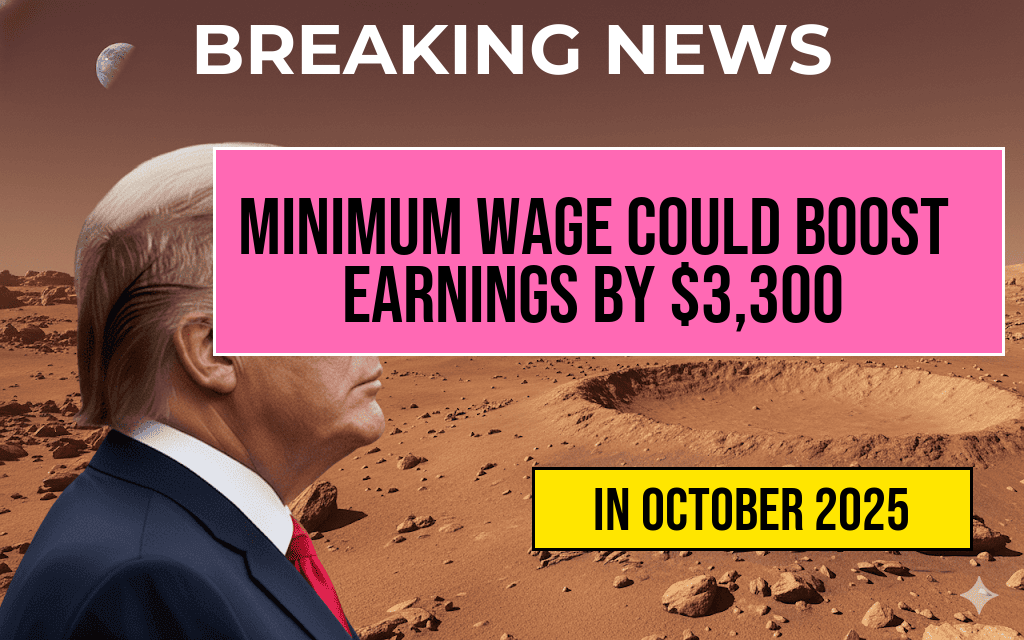A new study estimates that raising the federal minimum wage to $15 an hour could significantly increase earnings for millions of workers across the United States. Specifically, approximately 32 million workers could see their annual income rise by about $3,300 on average. This potential boost reflects the wage increase’s widespread impact, especially among low-income earners, and underscores ongoing debates about wage policies and economic equity. While proponents argue that a higher minimum wage can reduce poverty and stimulate local economies, critics warn of potential employment reductions and increased costs for businesses. The study’s findings add to a growing body of research evaluating the feasibility and consequences of implementing a $15 federal minimum wage, which has been a focal point in recent legislative discussions.
Understanding the Impact of a $15 Minimum Wage
The analysis, conducted by economic researchers at the Economic Policy Institute, highlights how a federal minimum wage increase aligns with ongoing efforts to improve living standards for low-wage workers. Currently, the federal minimum wage stands at $7.25 an hour, a rate established in 2009. Several states and localities have already adopted higher minimum wages, with some reaching or exceeding $15 an hour. The study projects that extending this wage floor nationwide could provide meaningful financial relief for millions, many of whom work multiple jobs or live in high-cost urban areas.
Projected Earnings Gains and Demographic Distributions
| Demographic Group | Number of Workers (millions) | Average Increase in Annual Earnings |
|---|---|---|
| Low-wage workers (under $15/hour) | 22 | $3,500 |
| Young workers (ages 16-24) | 10 | $2,800 |
| Minority workers | 18 | $3,700 |
| Workers in urban areas | 20 | $3,900 |
The study emphasizes that the earnings boost would be especially pronounced among minority workers and those employed in metropolitan regions. While the overall average increase hovers around $3,300, individual experiences vary based on regional cost of living and employment sectors. For example, workers in hospitality and retail industries, which dominate low-wage employment, stand to benefit the most, although some sectors might face adjustments in hiring patterns.
Economic and Policy Context
Historical and Legislative Background
The push for a $15 minimum wage gained momentum over the past decade, with several states and large cities implementing phased increases. The Biden administration has expressed support for federal legislation to establish this wage floor, framing it as a step toward economic fairness. However, the proposal faces opposition from business groups and some economists who argue it could lead to increased automation, reduced employment opportunities, or higher prices for consumers.
Debates and Divergent Perspectives
Supporters argue that a higher minimum wage can reduce income inequality, decrease reliance on government assistance programs, and stimulate consumer spending. According to the Washington Post, recent studies indicate that modest wage increases do not significantly impact employment levels but do improve workers’ financial stability.
Opponents, however, caution that a sudden wage hike could prompt employers to cut jobs, shift to more automation, or raise prices, potentially impacting small businesses and consumers. The Forbes notes that some regions with higher wages have experienced mixed results, underscoring the need for tailored approaches.
Broader Economic Implications
The potential earnings increase from a federal minimum wage hike could lead to broader economic effects. Increased income for low-wage workers might boost local economies through higher spending, but it could also influence inflationary pressures if costs are passed onto consumers. Policymakers are closely watching these dynamics, especially amid ongoing debates about inflation and economic recovery post-pandemic.
Regional Variations and Cost of Living
While the national average suggests a $3,300 annual improvement, the actual impact varies significantly across regions. In high-cost cities like New York and San Francisco, the relative increase could be more substantial in terms of purchasing power, whereas in lower-cost areas, the effect might be less pronounced. Policymakers are considering these disparities when debating how to implement and phase in wage increases.
Looking Ahead
The study’s findings add weight to ongoing legislative efforts aimed at raising the federal minimum wage. If enacted, the policy could reshape the income landscape for millions of workers, fostering greater economic security for many. As discussions continue in Congress, stakeholders from labor unions to business associations are weighing the potential benefits against possible economic challenges. The debate over the $15 minimum wage remains a defining element of the broader conversation about economic fairness and resilience in the United States.
Frequently Asked Questions
What is the proposed new federal minimum wage discussed in the study?
The study examines the impact of raising the federal minimum wage to fifteen dollars per hour.
How much could the increase in minimum wage benefit workers’ annual earnings?
The increase could boost annual earnings by approximately three thousand three hundred dollars for thirty-two million workers.
Which group of workers would be most affected by the wage increase?
The thirty-two million workers earning near or below the current minimum wage would experience the most significant earnings boost.
What are the potential economic impacts of raising the minimum wage to fifteen dollars?
Raising the federal minimum wage could lead to increased consumer spending and improved living standards for low-wage workers, though it may also impact employment levels.
Does the study discuss any potential drawbacks of increasing the minimum wage?
The study primarily focuses on earnings benefits, but some discussions in the broader context consider possible employment effects and business impacts associated with such a wage increase.

Leave a Reply